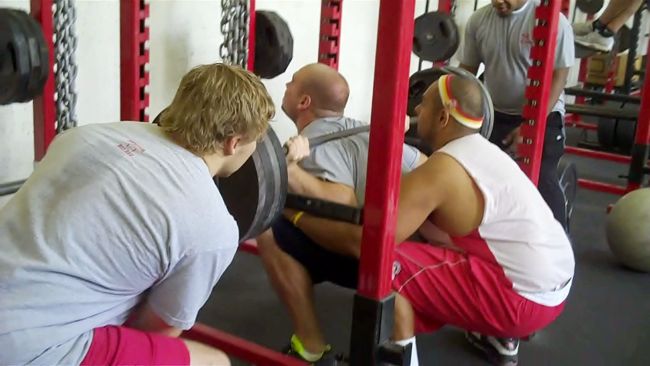
This is part two in a four-part series
EDUCATION
I don’t know if any strength coach initially got into this business for the money or the hours. Most of us got into this profession to educate and mentor young men and women. At the end of the day, we are all educators. As the head strength and conditioning coach, you are not only responsible for teaching athletes but also educating your assistants.
Exercise Technique
How your athletes execute each exercise on a consistent basis is probably the most sincere way a coach should be judged. The truth is proper technique should be the most important aspect of any strength and conditioning program. Anytime there is a discrepancy in exercise technique, there are generally only a few different causes: lack of knowledge, postural alignment and improper loading. The first reason an athlete cannot execute a movement properly is lack of knowledge. This is where education comes in. Does the athlete know what the proper technique is? If so, can they properly execute that movement? For example, if an athlete has trouble squatting to parallel, it is the strength coach’s job to make sure the athlete knows what a parallel squat is and what it feels like to execute it properly.
This is why it is important to implement exercise technique progressions. Every athlete that is introduced into your program should have an orientation period to learn how to execute the basic movement in your program. We have several teaching progressions we cram into two days the first week we have athletes for each particular team. This in no way suggests that these athletes are experts at the end of one week of teaching. But they should be proficient enough to execute the basic movements.
After the athlete is taught how to perform and exercise properly and still cannot perform it correctly with good form, then the strength coach must address postural alignment discrepancies and identify tight and weak muscle groups. Once these issues are identified, corrective exercise strategies must be implemented. Please don’t overanalyze this. For the squat in particular, solving these problems can simply mean adding posterior chain work, foam rolling the hip flexors or adding a band around the knees during warm-ups. This will all depend on what is causing the technique flaw in the first place.
The third reason an athlete cannot perform any exercise with good form is the weight is too heavy. This is a no-brainer. We’ll talk more on this later.
Spotting Technique
Don’t assume your athletes and assistants know to, or know how to, spot their fellow lifters. Advanced lifters take this for granted, especially when constantly training with other advanced lifters. Review spotting techniques with your coaches so they can make for certain the athletes understand the importance of spotting each exercise and the proper technique of doing so. For safety purposes, squatting and pressing movements should bear the bulk of spotting instruction. Make sure there is consistency in how you want your athletes to spot and when to spot each exercise.
Weight Room Maintenance
Unless you are a big fan of staph infections, MRSA and ringworm, I would put some emphasis on the cleanliness of your weight room. One staph infection can bring a lot of negative attention to your program. Having a daily and weekly cleaning schedule for your assistants and interns is crucial for weight room maintenance.
Emergency Procedures
Having an emergency plan is vital and can save valuable time if a serious injury or medical condition occurs. What may be more important is ensuring your assistant coaches, interns and athletes are able to carry out that emergency plan. The location of the nearest phone, the nearest AED and pertinent phone numbers should not only be posted, but also reviewed with coaches, interns and athletes.
NEXT WEEK IN THE L.E.A.D SERIES: ATTENTION TO DETAIL








